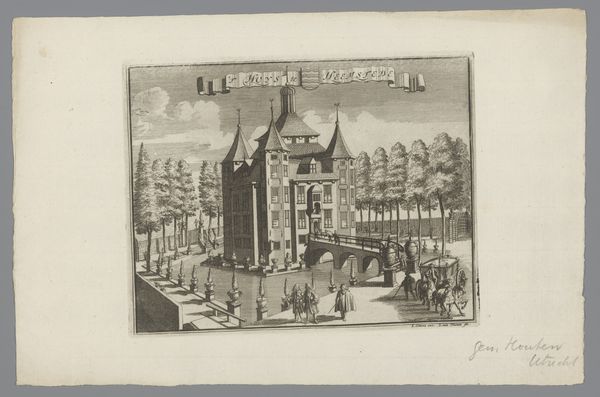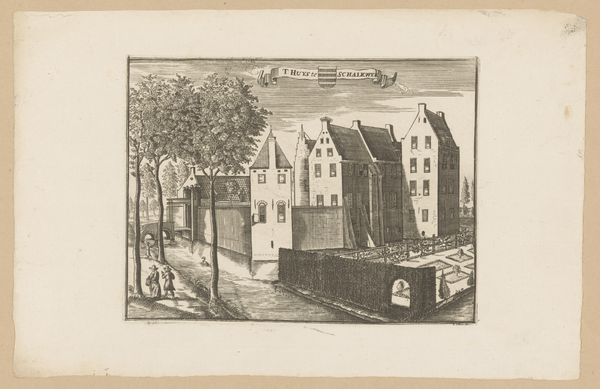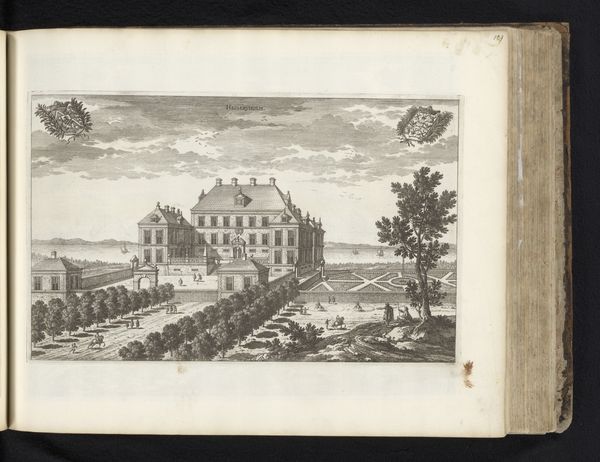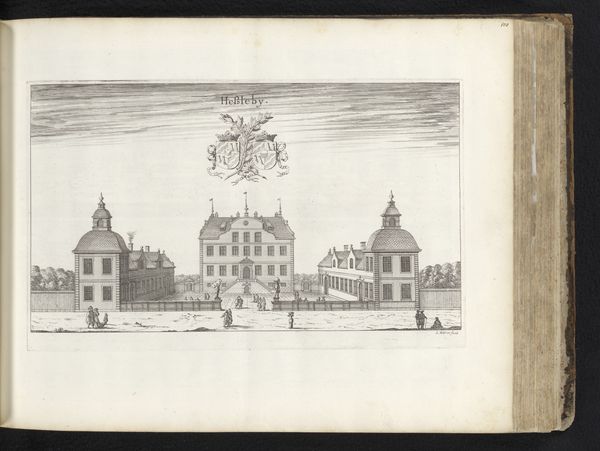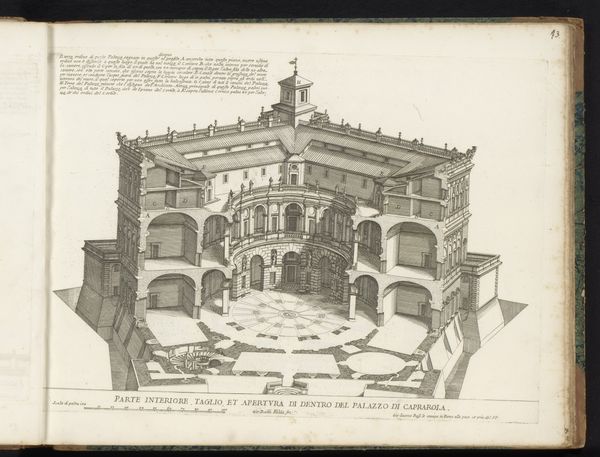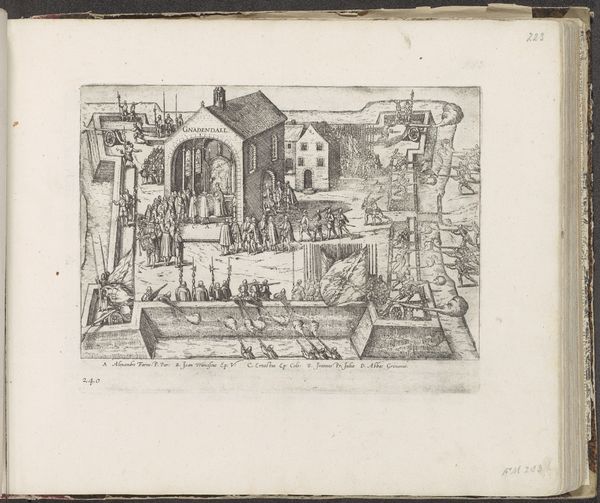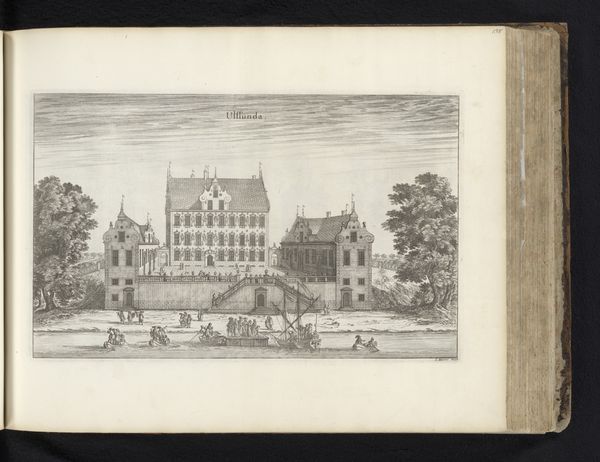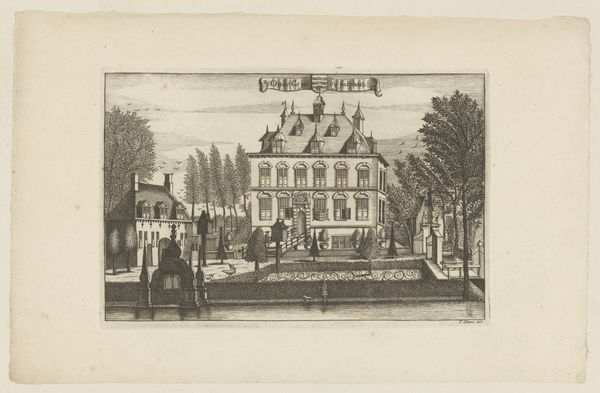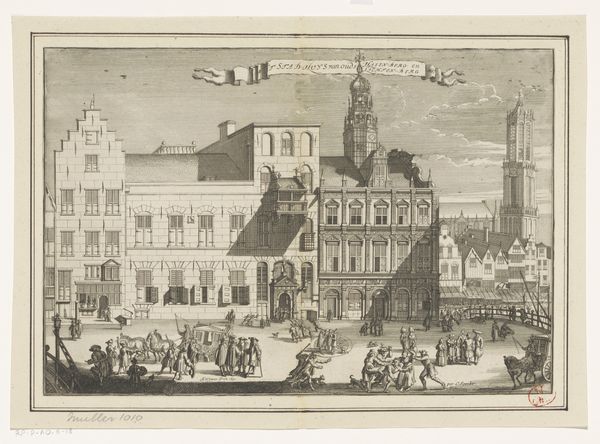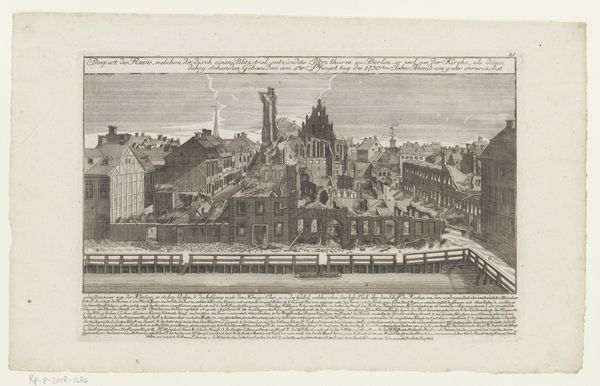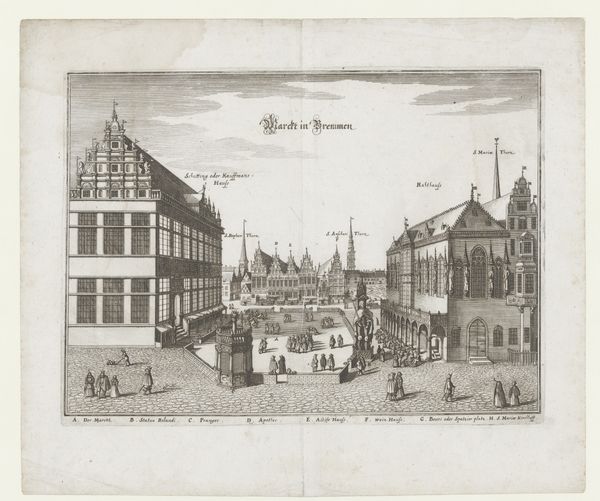
print, engraving
#
baroque
# print
#
landscape
#
cityscape
#
engraving
Dimensions: height 153 mm, width 207 mm
Copyright: Rijks Museum: Open Domain
Curator: The stoic presence of a Baroque castle rendered in monochrome. It's as though the very stones are whispering stories. Editor: That somber effect seems very much intentional. This engraving by Jan van Vianen, completed after 1710, gives us a "View of Castle Rijsenburg." Its power resides not only in the clarity of its lines, but also in how it reflects the societal currents of the period. It's now held in the collection of the Rijksmuseum. Curator: Immediately, my eyes are drawn to how the artist positioned the castle right at the intersection of waterways, creating a natural, if not imposing, defensive feature. And notice the small figures along the banks. Are they a comment on the power structure perhaps, with the elite literally and figuratively elevated above the common folk? Editor: It's tempting to read it that way. These estates were symbols of not only status, but power. Water, though offering defense, was equally part of a symbolic purification ritual. The images subtly implies power washing away the outside influence of a corrupt world, to some degree. The symbolism can be interpreted through alchemy: water as dissolution and transformation. Curator: I agree, and looking closer, that calculated placement enhances the symbolic weight—Rijsenburg less a residence, more a statement. Even the formal gardens and stoic statues, frozen in the manicured gardens, reinforce the notion of control and imposed order. Editor: Certainly. Moreover, there’s also the banner emblazoned over the edifice, which underscores this impression. And even the almost imperceptible ripples in the moat surrounding it serve as a poignant reminder that time and the relentless forces of change touch even the most resolute structures. Curator: Indeed. The imagery really prompts one to consider how the built environment and the ruling elite intertwined. The engraver allows a space to investigate the psychology behind that arrangement of power and image. Editor: It’s an apt example of how visual markers cement historical memories, or prompt forgotten narratives. This brief observation reinforces art’s remarkable ability to distil history’s echoes within a single, still image.
Comments
No comments
Be the first to comment and join the conversation on the ultimate creative platform.
